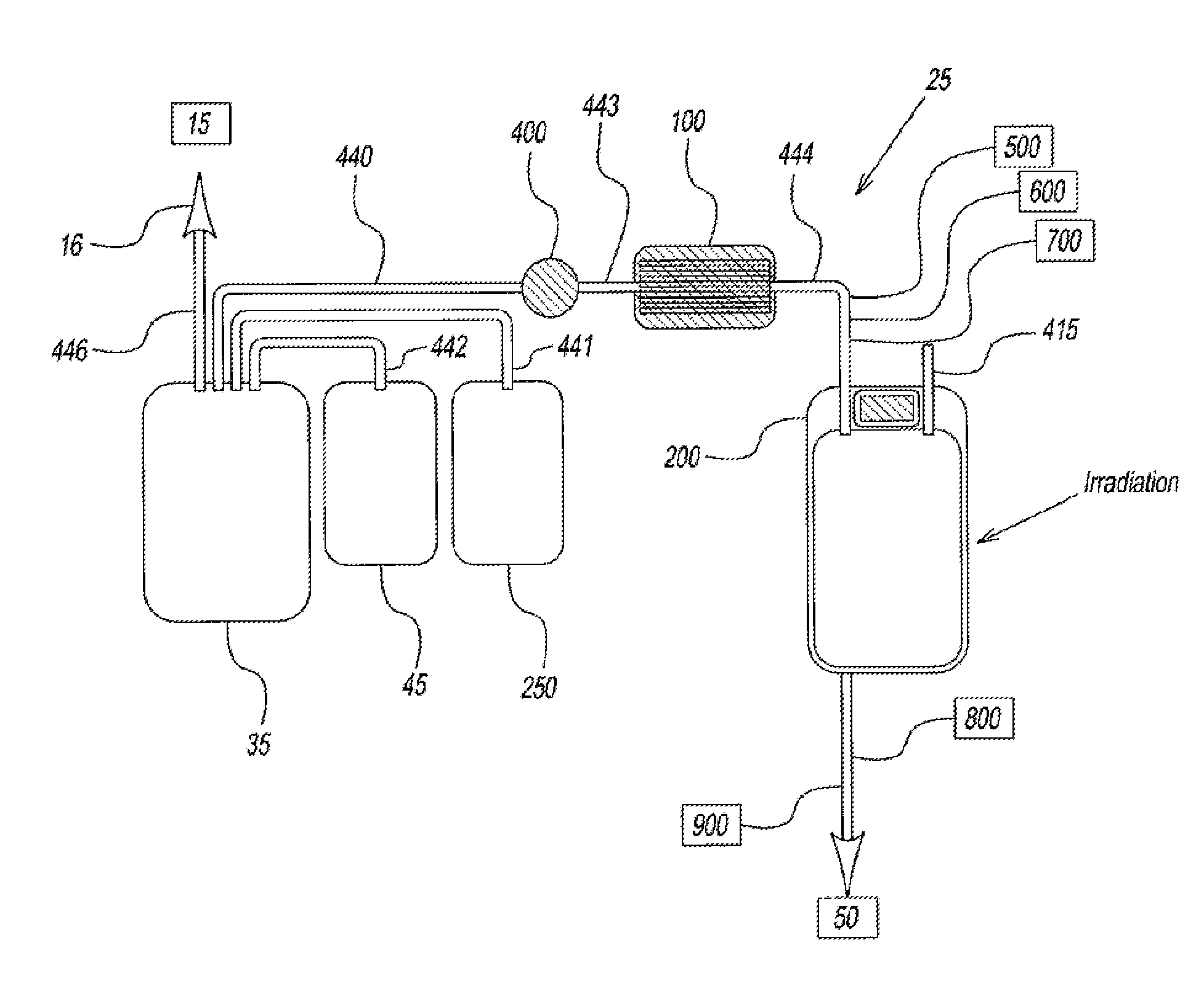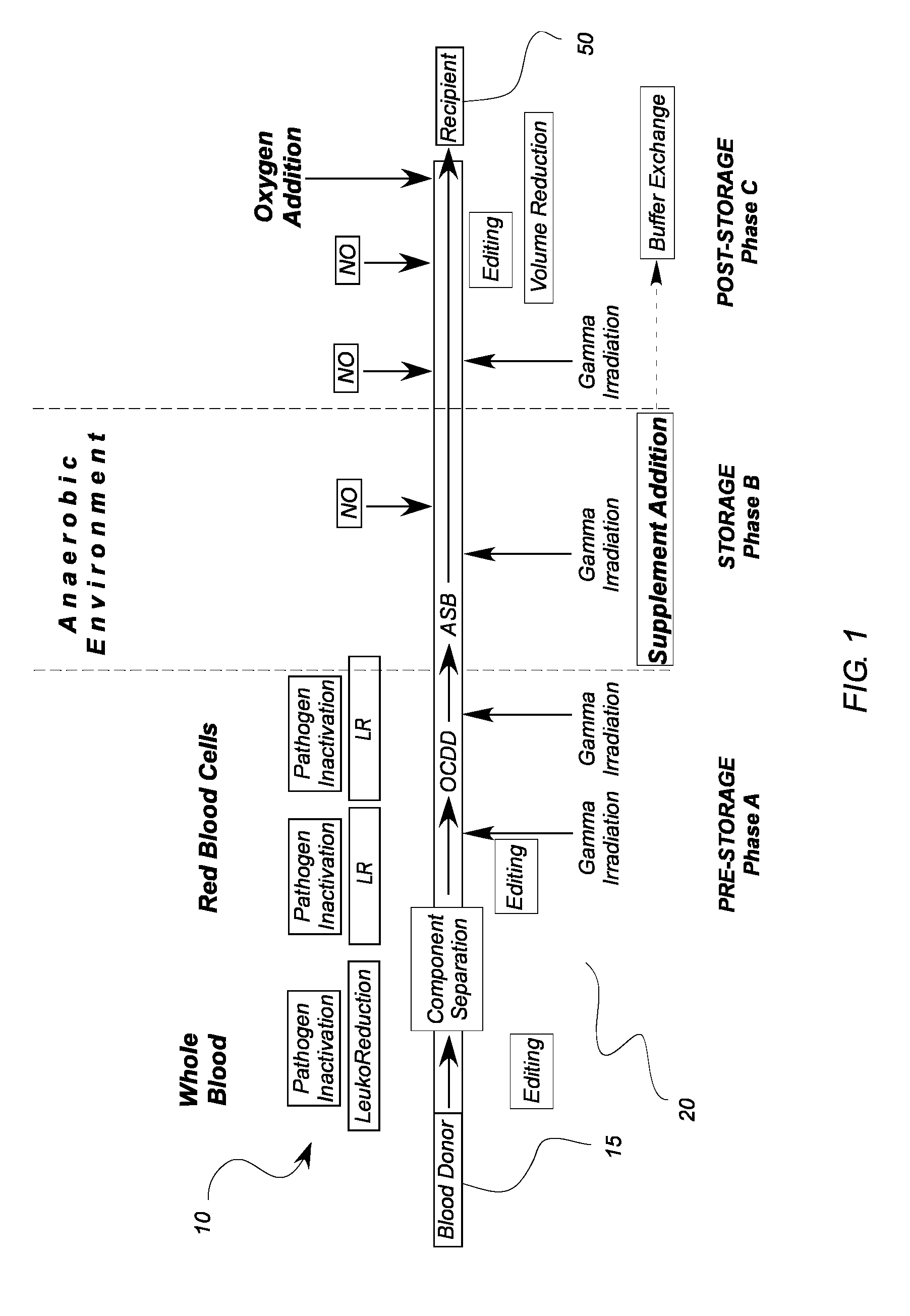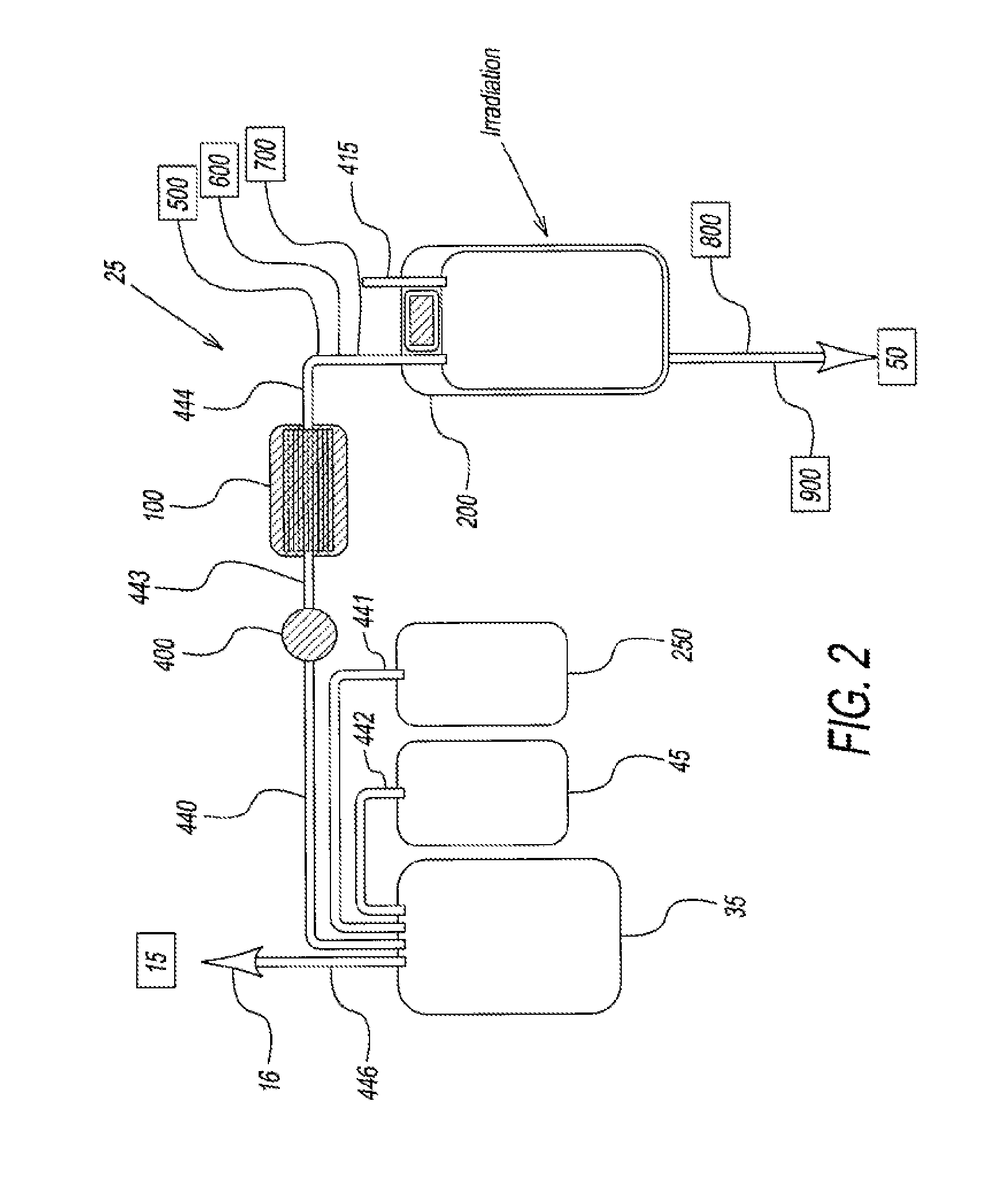System for extended storage of red blood cells and methods of use
a technology of red blood cell and storage system, applied in the field of systems and methods for the preservation of blood and red blood cells, to achieve the effects of enhancing the effect of irradiation, prolonging the time, and enhancing the heterologous transfusion logistics
- Summary
- Abstract
- Description
- Claims
- Application Information
AI Technical Summary
Benefits of technology
Problems solved by technology
Method used
Image
Examples
Embodiment Construction
[0057]The transfusion of red blood cells (RBCs) is a life-saving therapy aimed at improving oxygenation of the tissues and vital end organs in severely anemic patients. The majority of RBC units used for transfusion are stored at 1-6° C. for up to 42 days in an oxygen-permeable polyvinylchloride blood bag that contains additive / preservative solution.
[0058]Exemplary Definitions:
[0059]Blood Donor: Whole blood is preferably donated from a healthy individual or donor and held in a blood bank for later use to be ultimately used by a recipient. Subjects who are scheduled for surgery or other treatment may donate blood for themselves in a process known as autologous blood donation. Alternatively, blood is donated for use by another in a process known as heterologous transfusion. The collection of a whole blood sample drawn from a donor, or in the case of an autologous transfusion from a patient, may be accomplished by techniques known in the art, such as through donation or apheresis.
[00...
PUM
 Login to View More
Login to View More Abstract
Description
Claims
Application Information
 Login to View More
Login to View More - R&D
- Intellectual Property
- Life Sciences
- Materials
- Tech Scout
- Unparalleled Data Quality
- Higher Quality Content
- 60% Fewer Hallucinations
Browse by: Latest US Patents, China's latest patents, Technical Efficacy Thesaurus, Application Domain, Technology Topic, Popular Technical Reports.
© 2025 PatSnap. All rights reserved.Legal|Privacy policy|Modern Slavery Act Transparency Statement|Sitemap|About US| Contact US: help@patsnap.com



